 2018 CBECS: Principal Building Activities
2018 CBECS: Principal Building Activities
Warehouse and Storage
Warehouse and storage buildings are used to store goods, manufactured products, merchandise, raw materials, or personal belongings (such as public self-storage).

We publish four subcategories of warehouse and storage buildings:
- Nonrefrigerated warehouse
- Distribution or shipping center
- Public rental storage units
- Refrigerated warehouse
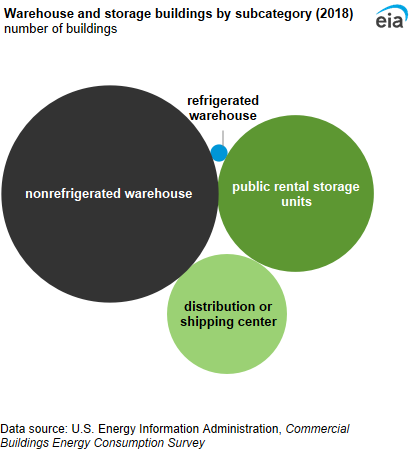
More than one-half (55%) of warehouse and storage buildings were nonrefrigerated warehouses. Public rental storage units (28%) were the second-most common warehouse and storage building type.
In 2018, the most common building type was warehouse and storage buildings. Although the idea of a warehouse may bring to mind a large building, most warehouses were relatively small—44% were between 1,001 square feet and 5,000 square feet, and 69% were less than 10,000 square feet. Less than 1% of warehouse and storage buildings were greater than 500,000 square feet. On average, warehouse and storage buildings were 17,400 square feet per building.
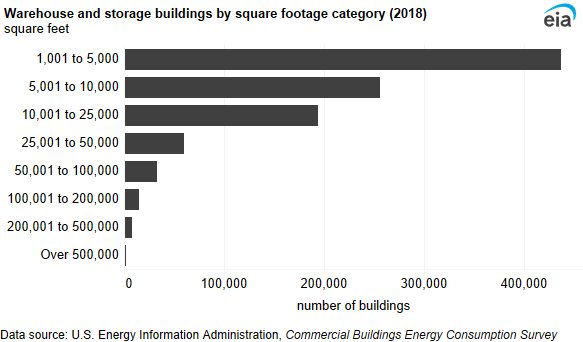
Many warehouse and storage buildings were newer buildings—about one-half (51%) were constructed in or after 1990.
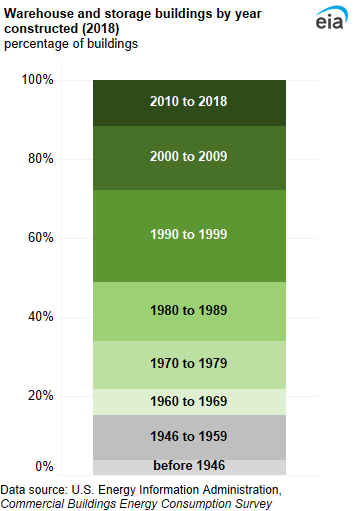
Energy use in warehouse and storage buildings
Warehouse and storage buildings used 528 trillion British thermal units (TBtu) of energy in 2018. Although warehouse and storage buildings accounted for 18% of total commercial floorspace, these buildings accounted for 8% of energy consumption in commercial buildings. Electricity was the most-used fuel (325 TBtu), followed by natural gas (199 TBtu). The mean energy intensity for warehouse and storage buildings was 30.2 thousand British thermal units (MBtu) per square foot.
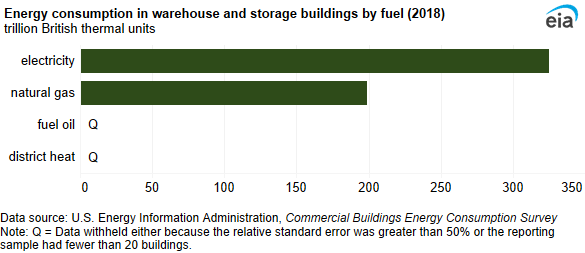
About one-half (52%) of warehouse and storage energy consumption came from distribution or shipping centers.
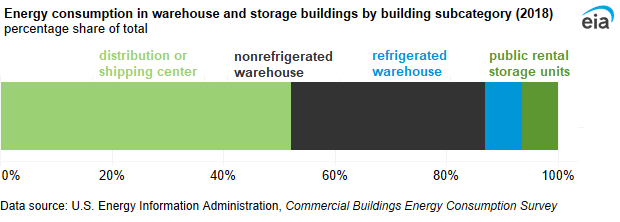
Space heating accounted for the largest share of end-use consumption in warehouse and storage buildings (39%). Other (21%) and lighting (15%) accounted for the second- and third-largest shares. All other end uses each accounted for 10% or less of end-use consumption.
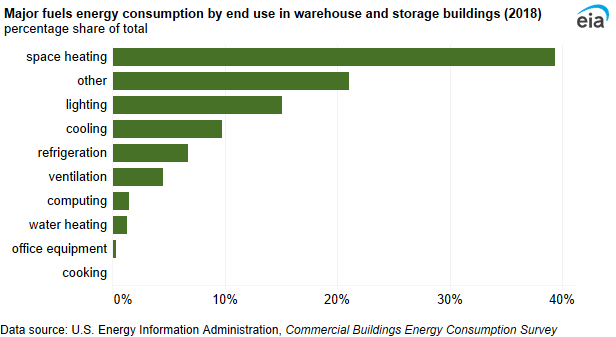
Energy intensity was highest for space heating (15.8 MBtu per square foot) and lowest for office equipment (0.1 MBtu per square foot).
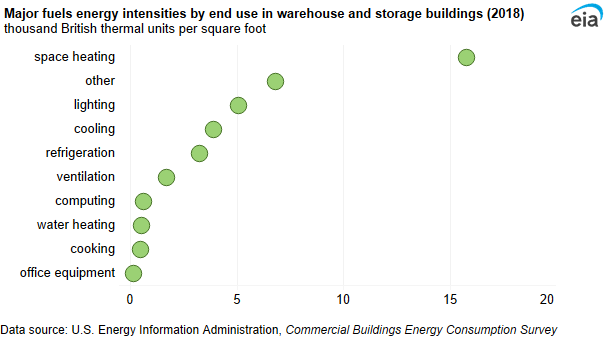
Inside warehouse and storage buildings
Individual space heaters were the most common heating equipment and were used in 22% of warehouse and storage buildings. Packaged heating units (20%) and furnaces (19%) were the second- and third-most-used heating equipment.
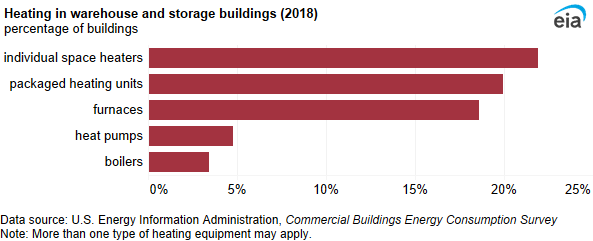
Packaged air conditioners were the most common cooling equipment (23%) in warehouse and storage buildings. Residential-type central air conditioners were the second-most-used cooling equipment (16%).
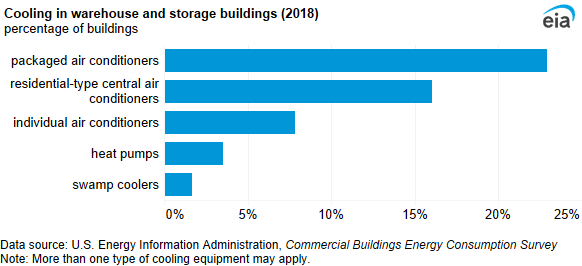



 /p>
/p>